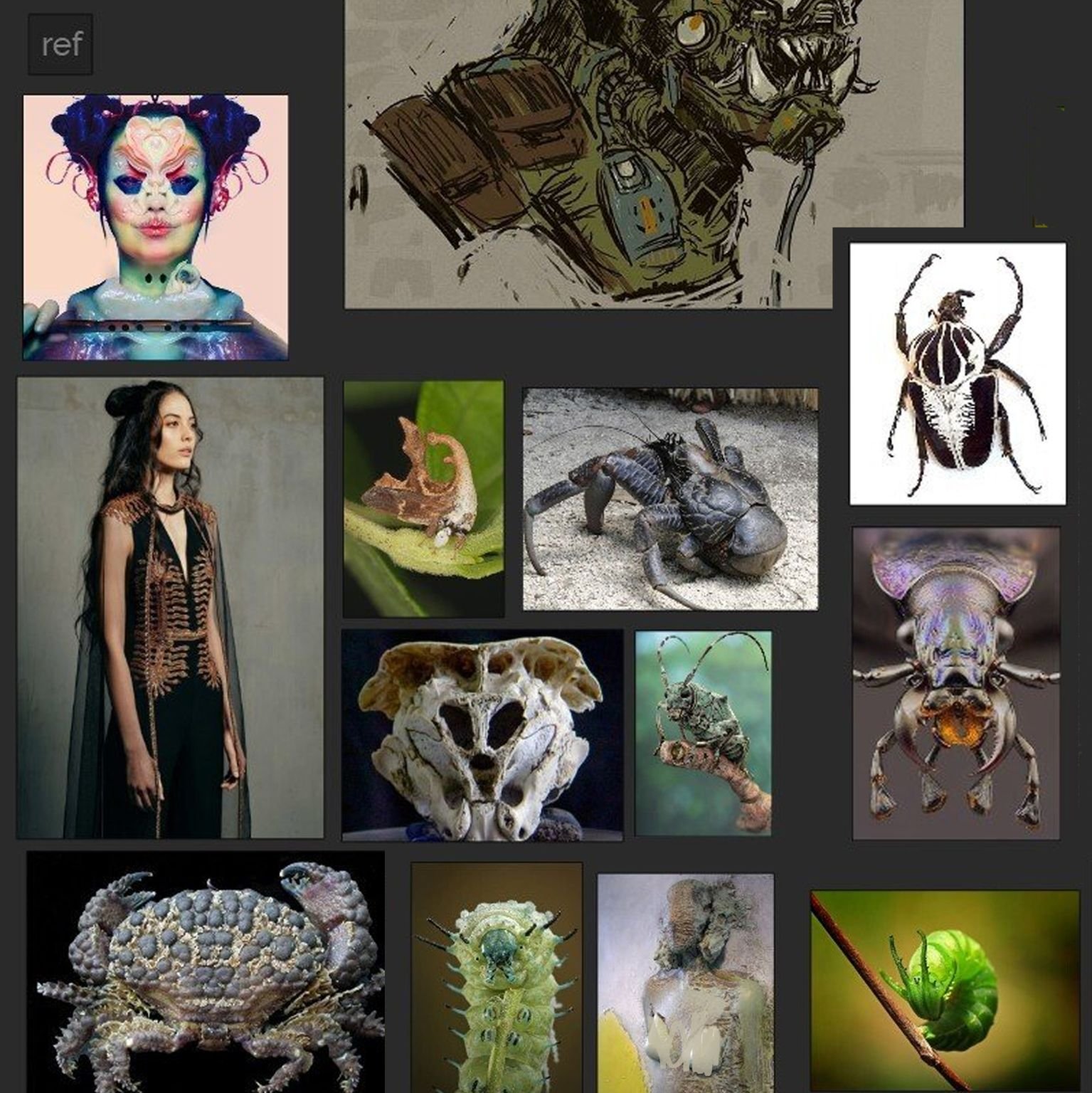How to Make Interesting Creature Designs
Most of my creature designs rely on reference, even when I’m aiming for something completely original or fantastical.
Using references helps me channel a specific mood, energy, or vibe into the creature, almost like casting the right actor for a role.
It’s kind of a cheat code, one that helps make the creature more believable and avoids the trap of creating an “inside joke” only I would get.
In these sci-fi designs, I drew inspiration from insects, my own biases, and natural elements to create the biology of something alien.
Curating your Reference
What specific reference should you use?
When I'm picking references for creature designs like these, I try to ground them in something that already exists in the world. It's much more efficient to reference a deep-sea crustacean or a microorganism you don't see every day and use it as a base for your concept. By doing this I don't have to create a biologically believable creature from scratch, but rather build on top of something that will look like it can exist, because in fact, it does exist, even if most don't know of it; from there, my usual ratio is 70/30, to keep at least 70% of the base of the creature and change things around to make it fit and amplify the project.
For instance, these horned bipedal aliens could serve well as an enemy NPC who would charge at you in a game like Destiny, and you would have to try to shoot from afar before they get too close to you. When I design creatures, I prioritize their role in the project over mere believability or aesthetics. All of those are important; the subject must look "cool" as in entertaining for a video-game project, but also believable, and work within the gameplay.
Colors and mood are another important aspect.
In this case, I wanted these to feel like they would serve in a paramilitary faction. I retained the green, military-like colors and added several pouches, while also preserving an organic contrast and the bug-like appearance of the creature. This design suggests that they were not born into this alignment but were instead domesticated by someone. This is called storytelling, and it is yet another important aspect of the work I do as a concept artist. No decision in this design is random.
Storytelling techniques
I honestly wish I could share it in a more clinical way. I don't have a set process; it's intuition-driven.
Most of the storytelling choices I make are ideas I come across as I work. When I start working, I start getting creative, and as I keep drawing and painting, or using 3D models, I keep getting new ideas. Part of it is to understand the creative brief fully, before even starting to draw, if the brief states I need to create a creature design with some kind of alignment and faction, and that it needs to look like an enemy and with a silhouette that suggests its gameplay, I don't immediately jump into a conclusion and a final image, I work on it as I go, I change things around, and most importantly, I research and look at reference.
Mostly, I pick a few shapes I think would look interesting, then start to sculpt my monster design from there. I once heard Emma Ruth Rundle talk about her guitar process and how she just sits and starts on acoustic guitar before moving on to electric guitar. She'd pick a few chords and play them over until something clicks, and things start to manifest, get vocal, and ideas spring from that seed. I think it's a process very much like this for me. As I work, I get to brainstorm possibilities, get excited, and begin collecting a few possibilities that may make sense.
The most important thing to take away is to have a direction; it may be your own artistic taste, your own project brief, or a gameplay constraint, but if you have a direction, you can keep adjusting what you have as you go. Putting it in another way, if you want to build a house, you must first have a blueprint of said house, it doesn’t mean it’s the final, but it’s a direction, along the way you’ll hit roadblocks, maybe a material won’t work, or you’d rather have a balcony instead of something else in your house. The creative brief is the blueprint.
About the author:
Miguel Nogueira is a professional Freelance Concept Artist working in video-games, film and entertainment. He has over 10 years of experience in gaming, and over 15 years of creative industry experience combined. If you’re stuck on a project, or just need a second opinion, feel free to reach out.



